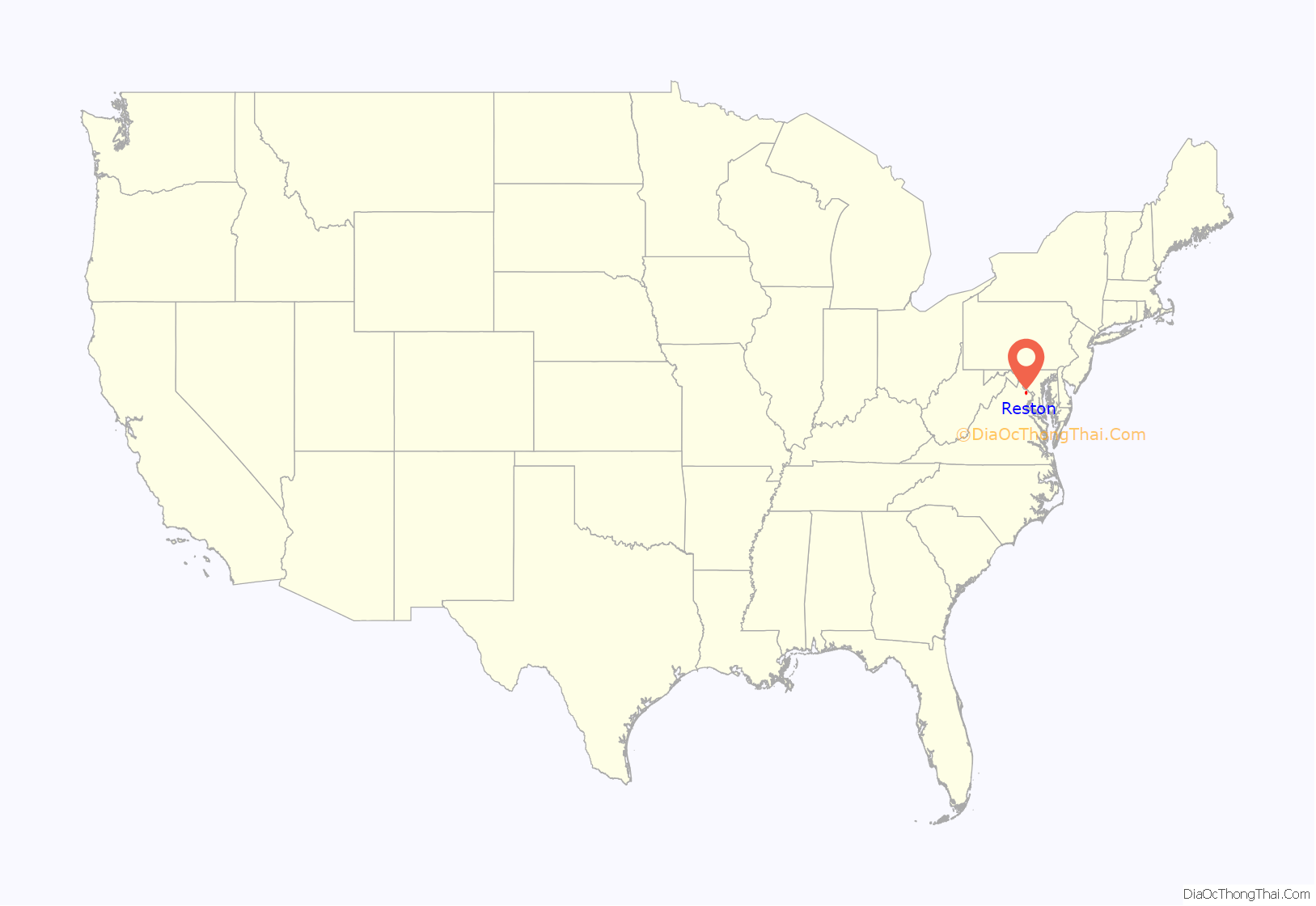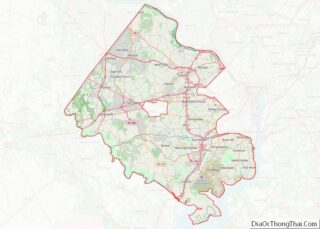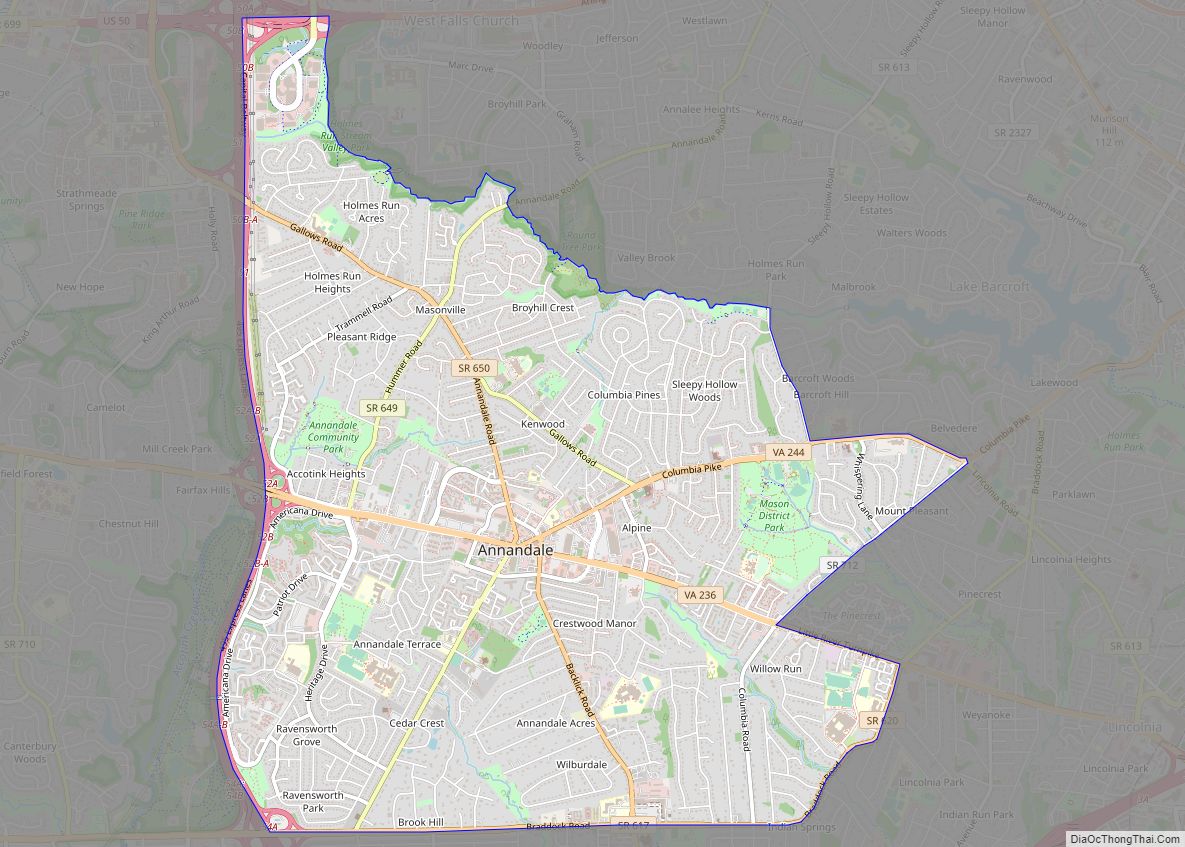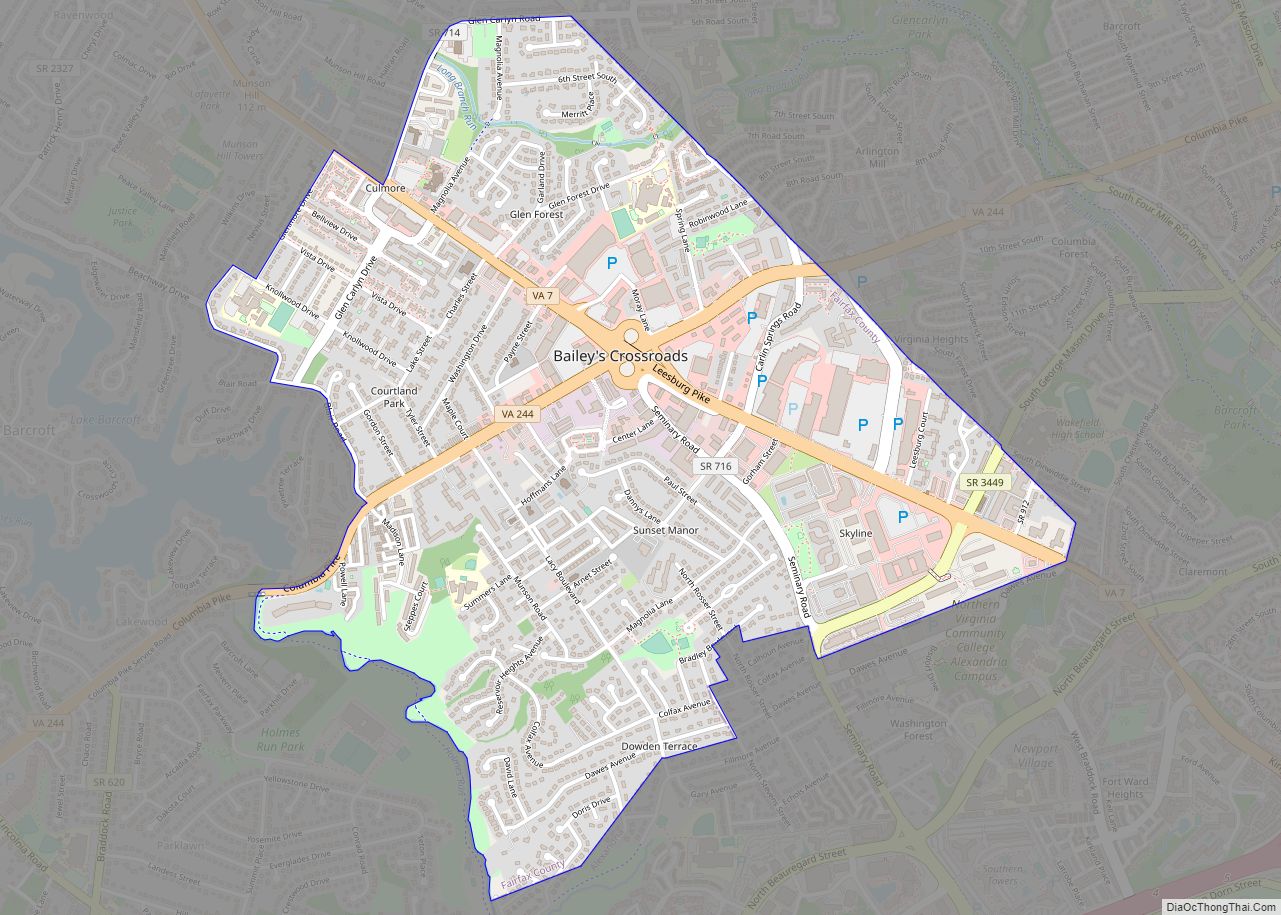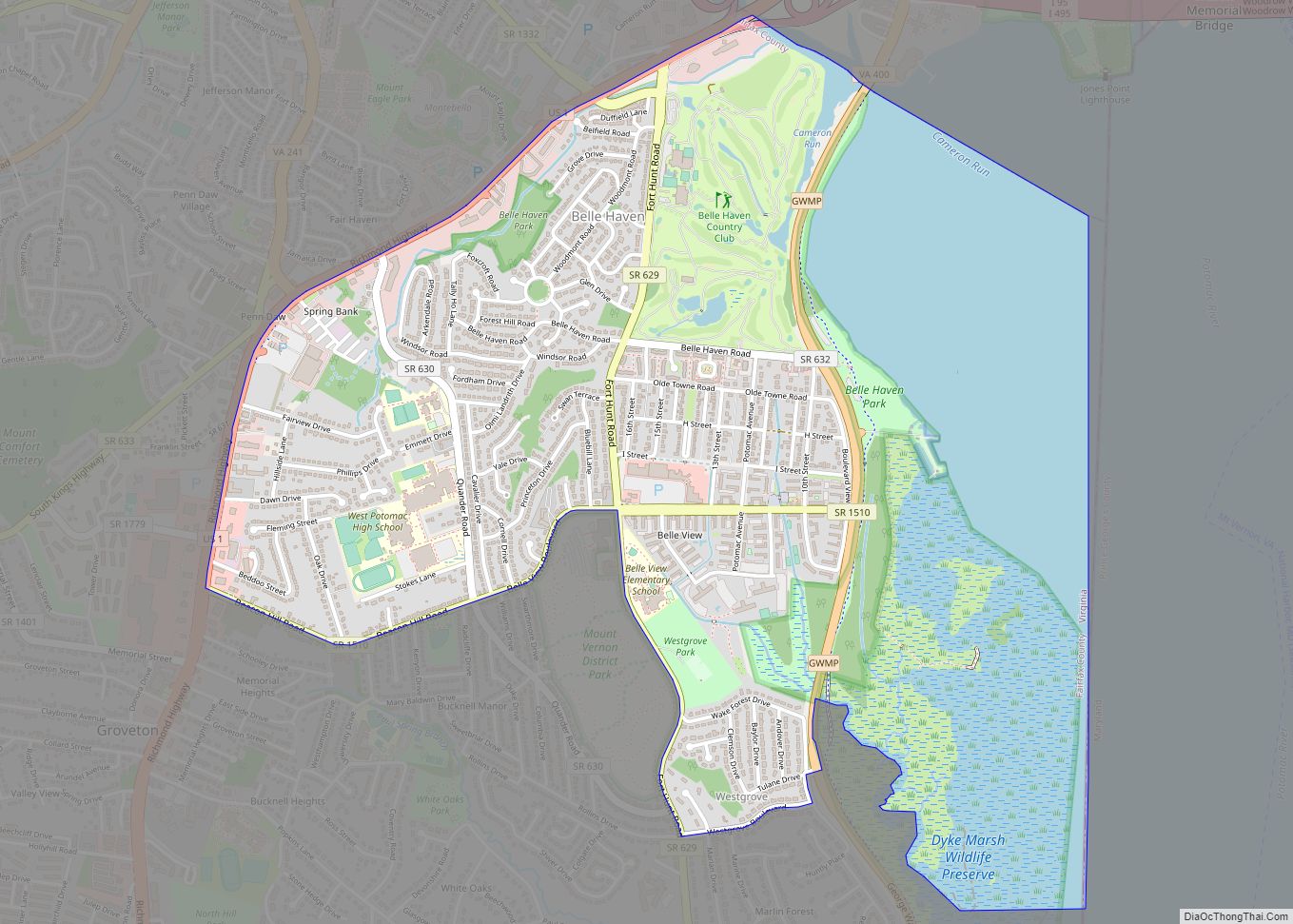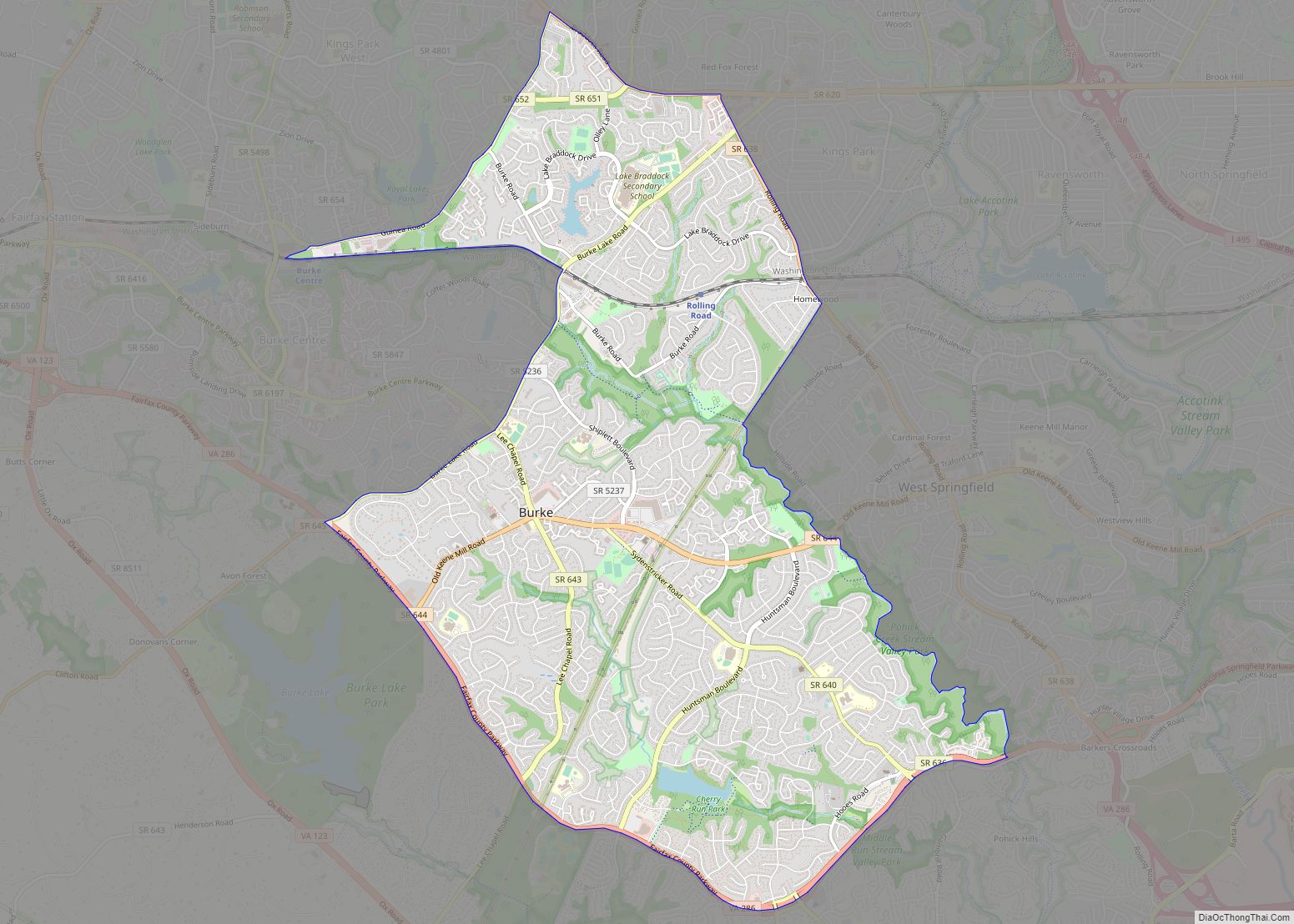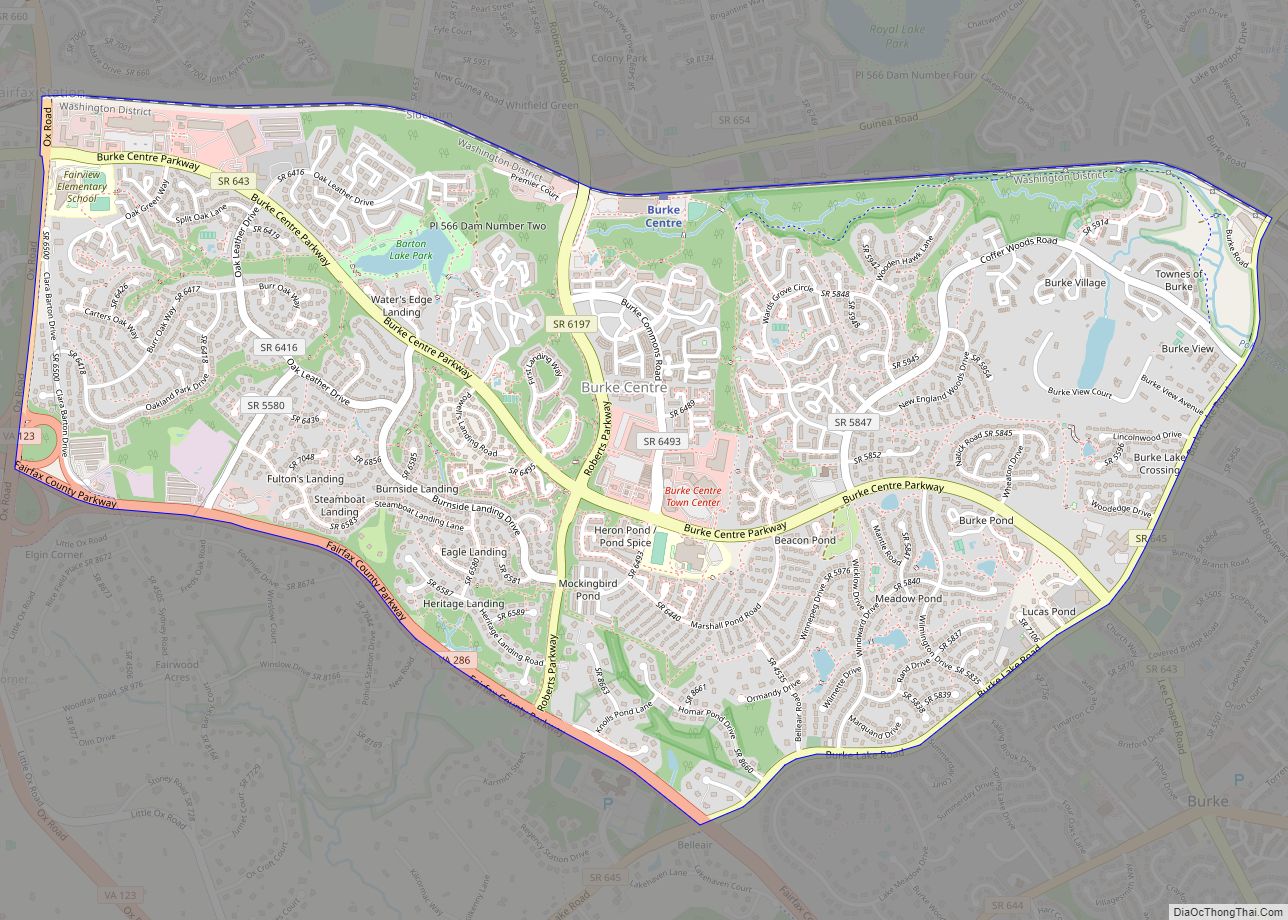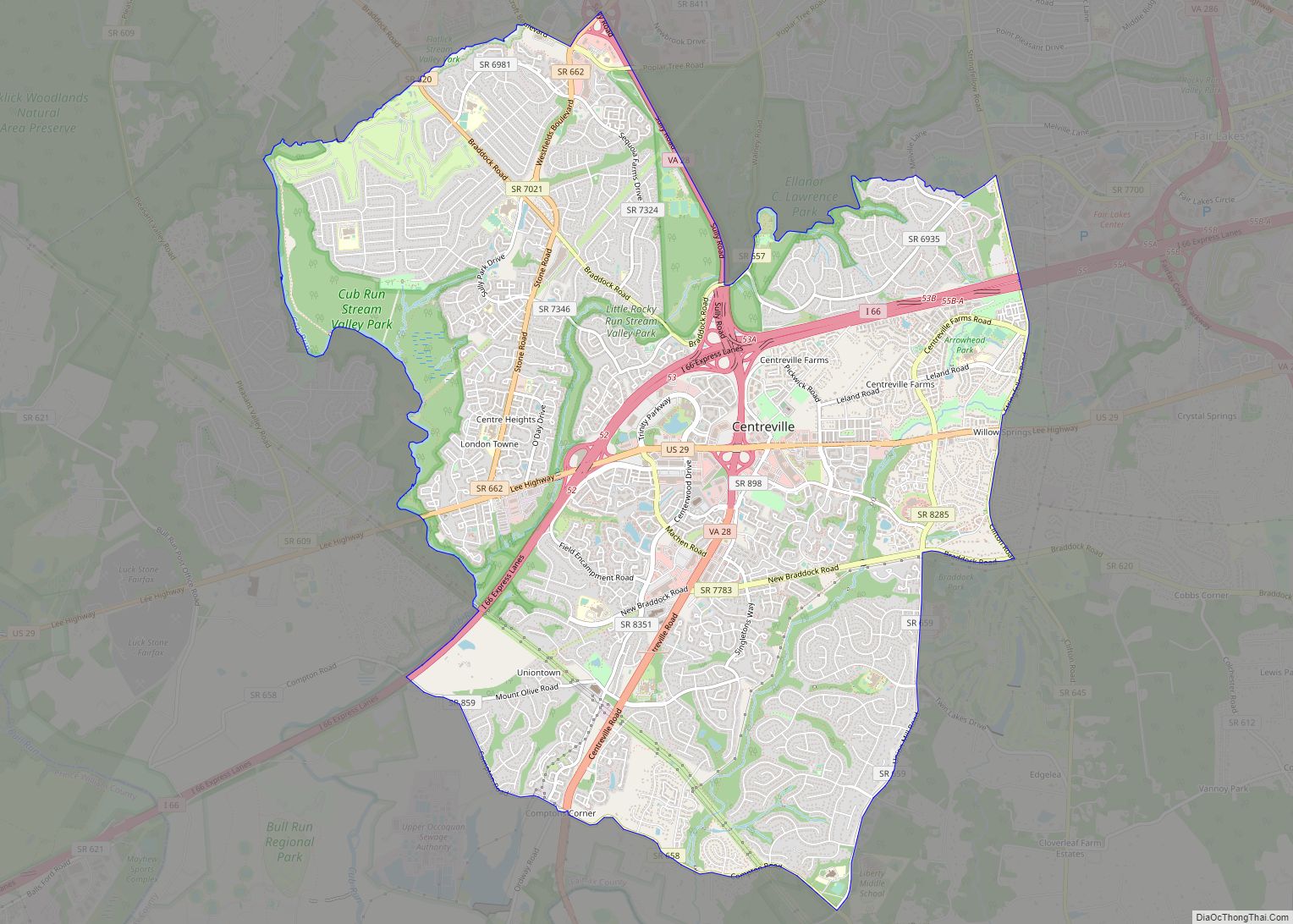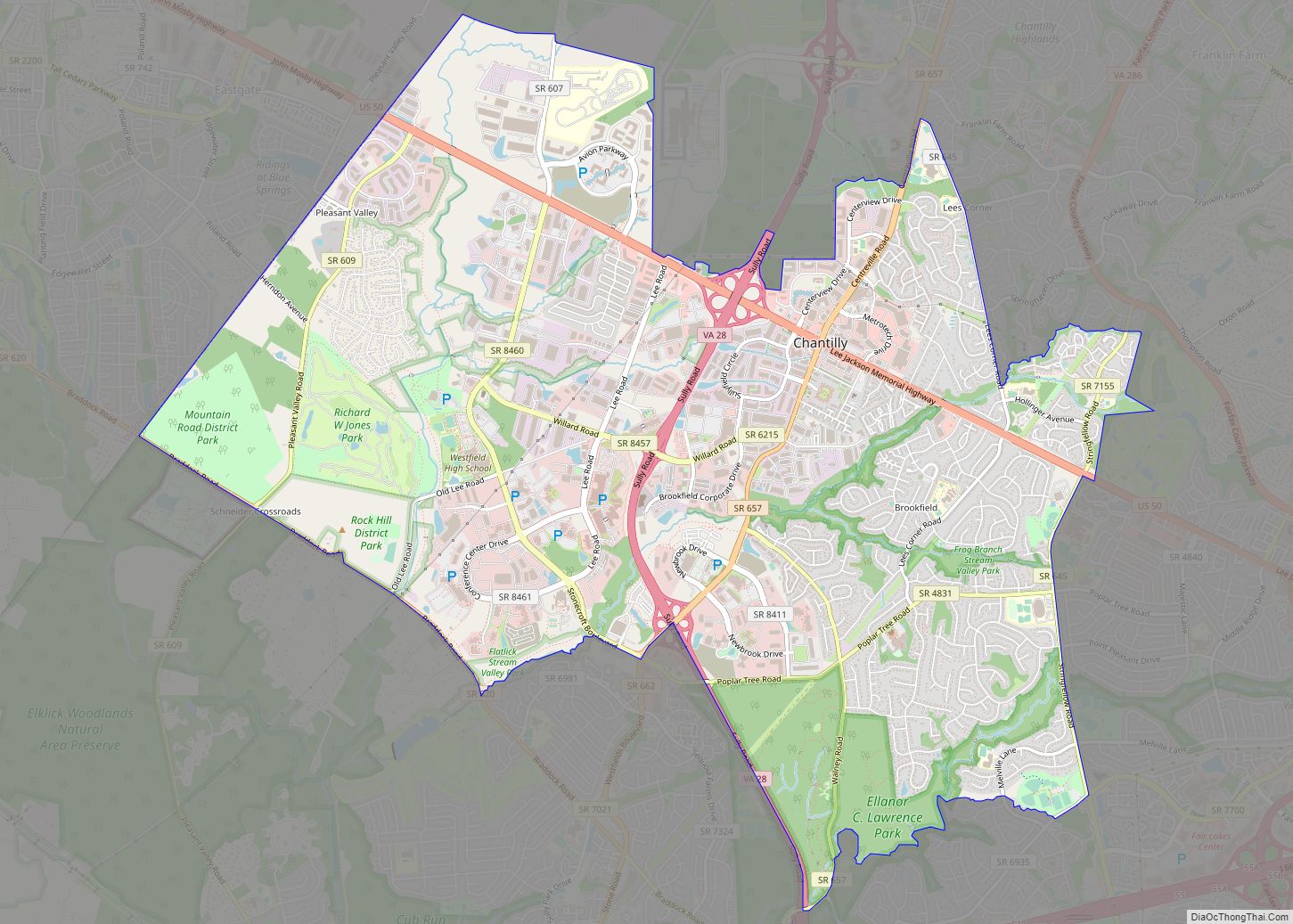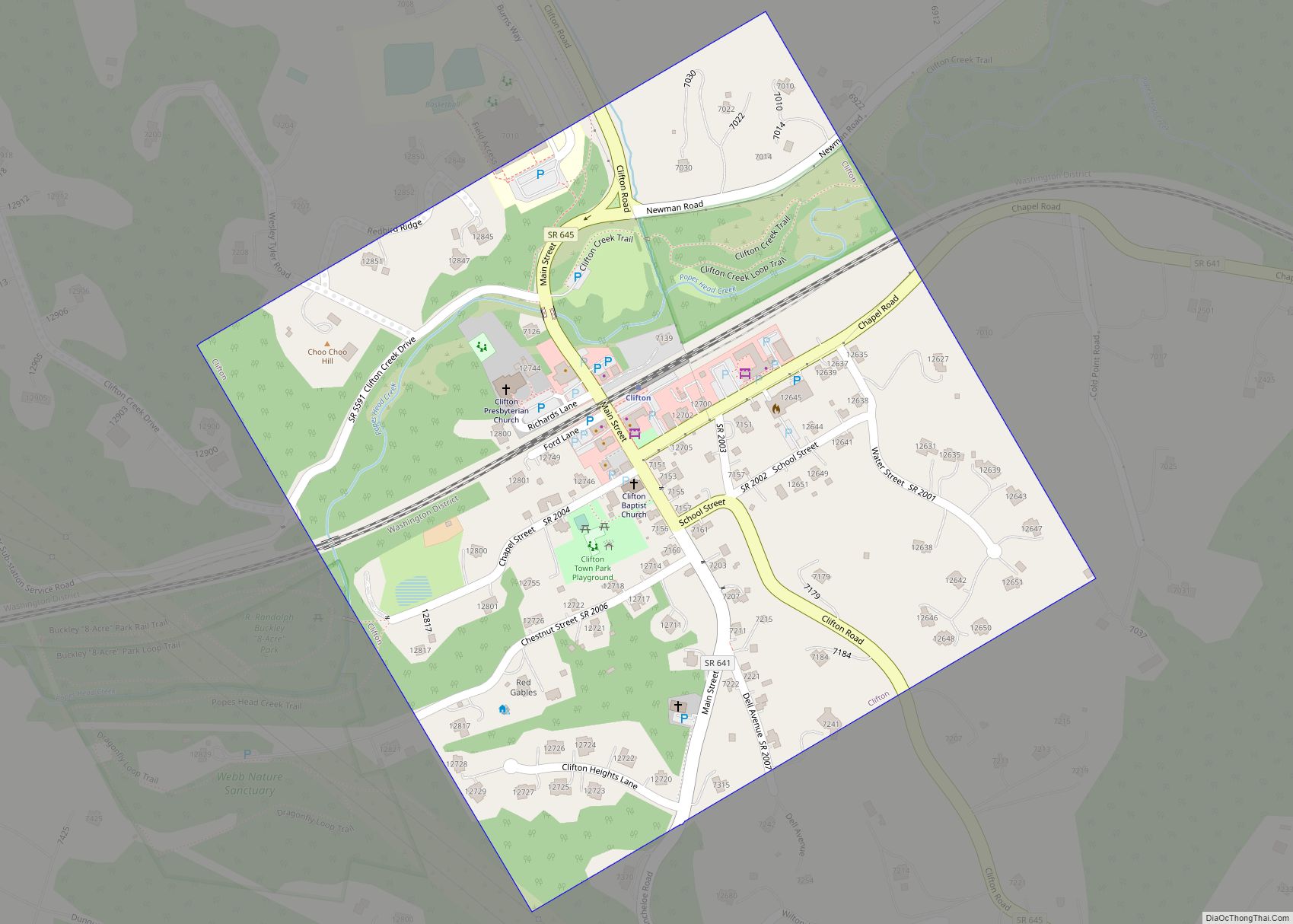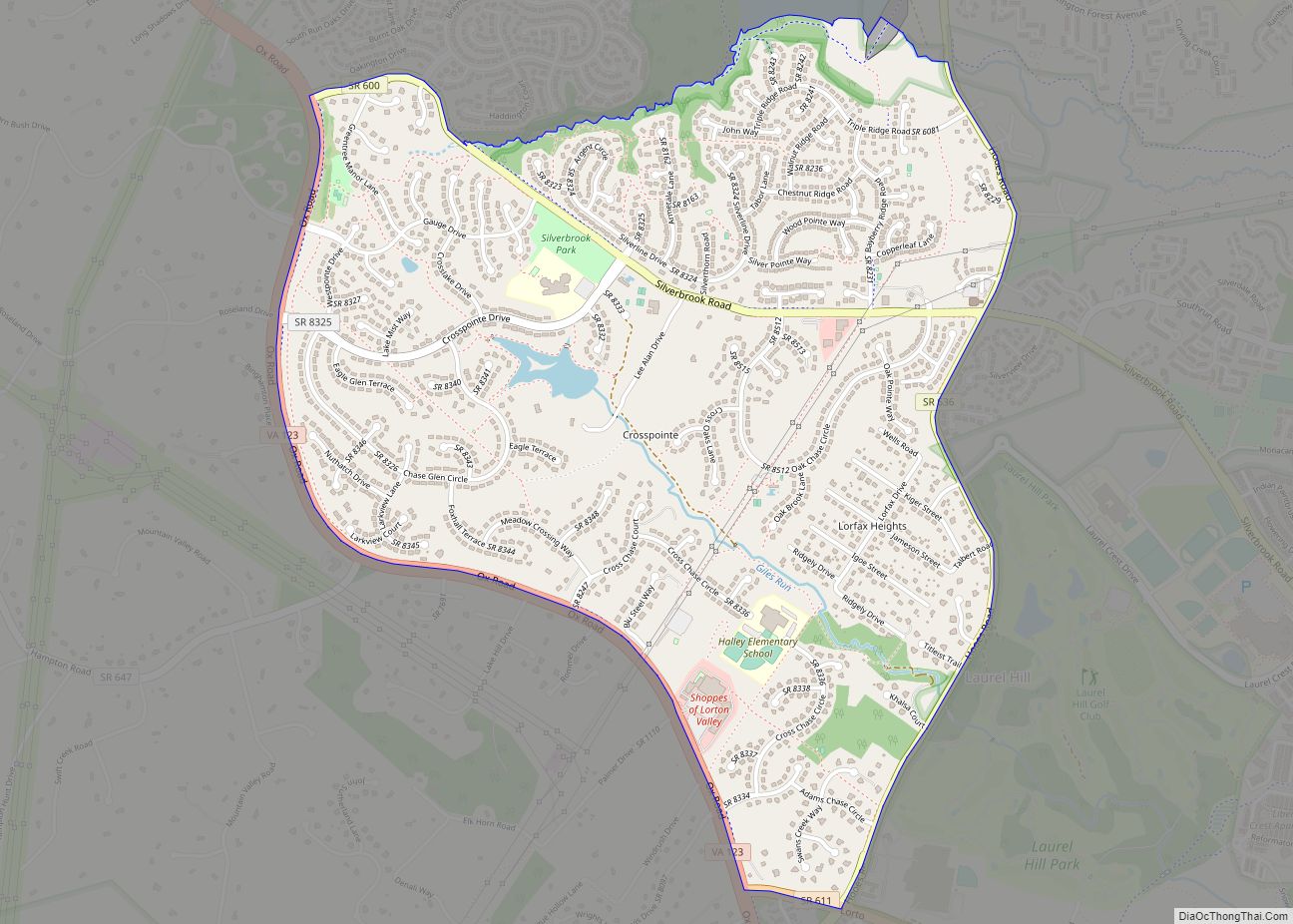Reston is a census-designated place in Fairfax County, Virginia, and a principal city of the Washington metropolitan area. As of the 2020 U.S. Census, Reston’s population was 63,226.
Founded in 1964, Reston was influenced by the Garden City movement that emphasized planned, self-contained communities that intermingled green space, residential neighborhoods, and commercial development. The intent of Reston’s founder, Robert E. Simon, was to build a town that would revolutionize post–World War II concepts of land use and residential/corporate development in suburban America. In 2018, Reston was ranked as the Best Place to Live in Virginia by Money magazine for its expanses of parks, lakes, golf courses, and bridle paths as well as the numerous shopping and dining opportunities in Reston Town Center.
| Name: | Reston CDP |
|---|---|
| LSAD Code: | 57 |
| LSAD Description: | CDP (suffix) |
| State: | Virginia |
| County: | Fairfax County |
| Founded: | April 10, 1964 |
| Elevation: | 360 ft (110 m) |
| Total Area: | 15.7 sq mi (40.6 km²) |
| Land Area: | 15.3 sq mi (39.7 km²) |
| Water Area: | 0.3 sq mi (0.9 km²) |
| Total Population: | 63,226 |
| Population Density: | 4,130/sq mi (1,593/km²) |
| Area code: | 703, 571 |
| FIPS code: | 5166672 |
| GNISfeature ID: | 1499951 |
| Website: | www.reston.org |
Online Interactive Map
Click on ![]() to view map in "full screen" mode.
to view map in "full screen" mode.
Reston location map. Where is Reston CDP?
History
In the early days of Colonial America, the land on which Reston sits was part of the Northern Neck Proprietary, a vast grant by King Charles II to Lord Thomas Fairfax that extended from the Potomac River to the Rappahannock. The property remained in the Fairfax family until they sold it in 1852.
Carl A. Wiehle and William Dunn bought 6,449 acres in northern Fairfax County along the Washington & Old Dominion (W&OD) Railroad line in 1886, later dividing the land between them, with Wiehle retaining the acreage north of the railroad line. Wiehle envisioned founding a town on the property, including a hotel, parks, and community center, but completed only a handful of homes before his death in 1901.
Wiehle’s heirs eventually sold the land, which changed hands several times before being purchased by the A. Smith Bowman family, who built a bourbon distillery on the site. By 1947, the Bowmans had acquired the former Dunn tract south of the railroad, for total holdings of over 7,000 acres (2,800 ha). In 1961, Robert E. Simon used funds from his family’s recent sale of Carnegie Hall to buy most of the land, except for 60 acres (240,000 m) on which the Bowman distillery continued to operate until 1987.
Conception and guiding principles
Simon officially launched Reston on April 10, 1964 (his 50th birthday) and named the community using his initials. He laid out seven “guiding principles” that would stress quality of life and serve as the foundation for its future development. His goal was for Restonians to live, work, and play in their own community, with common grounds and scenic beauty shared equally regardless of income level, thereby building a stronger sense of community ties. The initial motto of the community, as articulated by Simon, was “Work, Play, Live” (or, as more often was memorialized onto Reston merchandise, “Live, Work, Play.”)
Simon’s seven principles are:
- The town should provide a variety of leisure opportunities, including a wide range of cultural and recreational facilities as well as an environment for privacy;
- Residents would be able to remain in the community throughout their lives, with a range of housing meeting a variety of needs and incomes;
- The focal point of all planning would be on the importance and dignity of the individual and would take precedence for large-scale concepts;
- Reston residents would be able to live and work in the same community;
- Commercial, cultural, and recreational facilities would be available to residents immediately, not years later;
- Beauty, both structural and natural, is a necessity and should be fostered; and
- Reston should be a financial success.
Simon envisioned Reston as a model for clustered residential development, also known as conservation development, which puts a premium on the preservation of open space, landscapes, and wildlife habitats. Indeed, Reston was the first 20th-century private community in the U.S. to explicitly incorporate natural preservation in its planning (Greenbelt, Maryland, was a publicly supported community).
Early years (1964–1967)
Simon hired the architectural firm of Whittlesey, Conklin, & Rossant to design his new community. The plans for Reston were designed by architect James Rossant, who studied under Walter Gropius at the Harvard Graduate School of Design, and his partner William J Conklin. From the outset, Rossant and Conklin’s planning conceptualized the new community as a unified, cohesive, and balanced whole, including landscapes, recreational, cultural, and commercial facilities, and housing for what was envisioned to be a town of 75,000. For Lake Anne Plaza, the first of Reston’s village centers, the architects combined a small shopping area with a mix of single-family houses, townhouses, and apartments next to a manmade lake featuring a large jet fountain. Close by were the cubist townhouses at Hickory Cluster, designed by noted modernist architect Charles M. Goodman in the International Style. Lake Anne also included an elementary school, a gasoline station, and two churches as well as an art gallery and several restaurants. The first section of a senior citizens’ residence facility, the Lake Anne Fellowship House, was completed several years later.
Reston welcomed its first residents in late 1964. During the community’s first year, its continued development was covered in such major media publications as Newsweek, Time, Life, and the New York Times, which featured the new town in a front-page article extolling it as “one of the most striking communities” in the United States. Nikki Hornsby performed an hour paid concert singing with her guitar outside for this new Reston Community.
Gulf Reston (1967–1978)
From early in Reston’s conception and development, Robert Simon ran into financial difficulties as sales in the new community flagged. To keep his project going, he accepted a loan of $15 million from Gulf Oil that allowed him to pay off his creditors. Even so, sales were sluggish as Simon’s reluctance to compromise on his high standards for building designs and materials meant that a townhouse in Reston could cost as much as a single-family house elsewhere in Fairfax County.
By 1967, Gulf Oil forced Simon out and formed Gulf Reston, Inc., to manage the community. Gulf retained many of Simon’s employees and continued to adhere largely to the spirit of the original Reston master plan as envisioned by Simon. During the 1970s, Gulf built the Reston International Center near the intersection of Sunrise Valley and Reston Parkway, and added low- to moderate-income housing to the community’s residential mix, including the Cedar Ridge, Laurel Glade, and Fox Mill apartment developments. Gulf also constructed housing for employees of the U.S. Geological Survey headquarters, located on Sunrise Valley Drive.
Most notably, Gulf Reston put a premium on protecting Reston’s open spaces and pedestrian-friendly landscape throughout its ownership. The corporation also transferred title for many Reston recreational facilities, including land, parks, lakes, and facilities, to the Reston Homeowners Association, thereby preserving them from overdevelopment.
Mobil Oil’s Reston Land Corporation (1978–1996)
Within 10 years of buying Simon out, Gulf opted to begin pulling out of the real estate business and instead to focus exclusively on energy. It sold Reston’s developed portions, including the three completed village centers (Lake Anne, Tall Oaks, and Hunters Woods), the Reston International Center, and Isaac Newton Square, to an investment firm. In 1978, the company finalized the sale of Reston’s remaining 3,700 undeveloped acres to Mobil Oil, which pledged to continue respecting the ideals of Robert Simon. Mobil formed the Reston Land Corporation as a subsidiary to manage its holdings and began developing the remaining residential areas in what would become the South Lakes and North Point villages. Reston Land introduced a wider mix of housing choices, including more townhouses and smaller “starter” homes, and completed the North County Government Center, which houses the Reston District police station and Fairfax County government offices, as well as a regional library and homeless shelter.
Reston Land also broke ground on the 460-acre Reston Town Center which formed part of Simon’s original master plan for Reston. The first four-block development of this multi-phase mixed-use project were opened in 1996 and included a hotel, several restaurants, a cinema, and office buildings.
Reston in the New Millennium (1996–present)
By 1996, Mobil had decided to follow Gulf Oil’s steps and pull out of the land management business. It sold its entire Mobil Land Development subsidiary, including its Reston holdings, to Westbrook Partners, LLC, for $324 million. As Reston Town Center continued to develop, Boston Properties emerged as a leading player. The company became the sole owner of the core mixed-use tracts in Reston Town Center when it completed the purchase of the Fountain Square office/retail complex in 2012.
Reston Road Map
Reston city Satellite Map
Geography
Reston is located in northern Fairfax County at 38°57′16″N 77°20′47″W / 38.95444°N 77.34639°W / 38.95444; -77.34639. Neighboring communities are Great Falls to the north, Wolf Trap to the east, Franklin Farm, Floris, and McNair to the southwest, the town of Herndon to the west, and Dranesville to the northwest.
According to the United States Census Bureau, the Reston CDP has a total area of 15.7 square miles (40.6 km), of which 15.3 square miles (39.7 km) is land and 0.35 square miles (0.9 km), or 2.10%, is water.
See also
Map of Virginia State and its subdivision:- Accomack
- Albemarle
- Alexandria
- Alleghany
- Amelia
- Amherst
- Appomattox
- Arlington
- Augusta
- Bath
- Bedford
- Bedford City
- Bland
- Botetourt
- Bristol
- Brunswick
- Buchanan
- Buckingham
- Buena Vista
- Campbell
- Caroline
- Carroll
- Charles City
- Charlotte
- Charlottesville
- Chesapeake
- Chesterfield
- Clarke
- Clifton Forge City
- Colonial Heights
- Covington
- Craig
- Culpeper
- Cumberland
- Danville
- Dickenson
- Dinwiddie
- Emporia
- Essex
- Fairfax
- Fairfax City
- Falls Church
- Fauquier
- Floyd
- Fluvanna
- Franklin
- Frederick
- Fredericksburg
- Galax
- Giles
- Gloucester
- Goochland
- Grayson
- Greene
- Greensville
- Halifax
- Hampton
- Hanover
- Harrisonburg
- Henrico
- Henry
- Highland
- Hopewell
- Isle of Wight
- James City
- King and Queen
- King George
- King William
- Lancaster
- Lee
- Lexington
- Loudoun
- Louisa
- Lunenburg
- Lynchburg
- Madison
- Manassas
- Manassas Park
- Martinsville
- Mathews
- Mecklenburg
- Middlesex
- Montgomery
- Nelson
- New Kent
- Newport News
- Norfolk
- Northampton
- Northumberland
- Norton
- Nottoway
- Orange
- Page
- Patrick
- Petersburg
- Pittsylvania
- Poquoson
- Portsmouth
- Powhatan
- Prince Edward
- Prince George
- Prince William
- Pulaski
- Radford
- Rappahannock
- Richmond
- Roanoke
- Roanoke City
- Rockbridge
- Rockingham
- Russell
- Salem
- Scott
- Shenandoah
- Smyth
- Southampton
- Spotsylvania
- Stafford
- Staunton
- Suffolk
- Surry
- Sussex
- Tazewell
- Virginia Beach
- Warren
- Washington
- Waynesboro
- Westmoreland
- Williamsburg
- Winchester
- Wise
- Wythe
- York
- Alabama
- Alaska
- Arizona
- Arkansas
- California
- Colorado
- Connecticut
- Delaware
- District of Columbia
- Florida
- Georgia
- Hawaii
- Idaho
- Illinois
- Indiana
- Iowa
- Kansas
- Kentucky
- Louisiana
- Maine
- Maryland
- Massachusetts
- Michigan
- Minnesota
- Mississippi
- Missouri
- Montana
- Nebraska
- Nevada
- New Hampshire
- New Jersey
- New Mexico
- New York
- North Carolina
- North Dakota
- Ohio
- Oklahoma
- Oregon
- Pennsylvania
- Rhode Island
- South Carolina
- South Dakota
- Tennessee
- Texas
- Utah
- Vermont
- Virginia
- Washington
- West Virginia
- Wisconsin
- Wyoming
